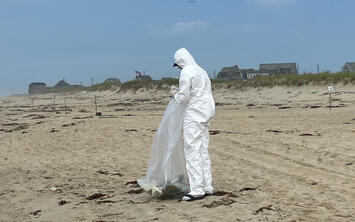
Photos of oil-covered seals and birds from California’s 1969 Santa Barbara blowout helped launch the environmental and stop-oil movements. Some 90,000 barrels polluted ocean waters and yet, when I was scuba diving beneath it two decades later, the same production platform support structure once again hosted a magnificent ecosystem with millions of anemones, mussels, starfish, crabs and fish.
The 2010 Deepwater Horizon drillship disaster killed eleven workers and blasted 3-4 million barrels of oil and enormous amounts of natural gas into the Gulf of Mexico. Yet within a surprisingly short time after the runaway well was capped, wave action, oil-dispersant chemicals, dust-covered oil droplets slowly sinking to the seafloor, and other natural forces had cleansed the waters of oil.
Those other forces were hydrocarbon-degrading microbes that are always present in ocean waters worldwide – but rapidly reproduce when they sense oil in their environs. After depleting the hydrocarbon food sources, the microbes die off to normal numbers, and new organisms degrade the byproducts the initial foragers created, until those nutrients are also gone. Then their populations also plummet, in a newly clean ocean.
The disasters spurred industry to implement better blowout prevention technologies and procedures.
Irrelevant, anti-oil activists say, they also emphasize why we must banish oil and gas – and replace fossil fuels with clean, green wind, solar and battery power. Otherwise, wildlife, beaches and tourism will be threatened repeatedly by oil spills.
It’s becoming increasingly obvious that these supposed alternatives won’t work – especially as AI, EVs, data centers, government-mandated electric heating and cooking, and charging grid-backup batteries, double or triple electricity generation demands. Intermittent electricity cannot power modern nations. Wind and solar cannot produce thousands of essential products that require petrochemical feed stocks. These energy sources are not clean, green, renewable or sustainable. They endanger wildlife.
A recent mishap off the Nantucket, Massachusetts coast underscores yet another reason why hundreds or thousands of monstrous wind turbines cannot be permitted in America’s coastal waters. Shards, chunks and finally the rest of a turbine blade fell into the ocean. One blade … from a 62-turbine project that’s only three-fourths completed … broken by its own weight, not by a storm.
The blade was broken by its own weight, not even by a storm. And yet it was enough to force the closure of beaches amid peak tourist season, while crews picked up pieces of fiberglass-resin-plastic-foam. Boats were also forced to dodge big pieces floating in the water. Worse, Vineyard Wind, the company behind the project, didn’t even warn Nantucket officials about the problems until two days after the blade began disintegrating.
Read the rest of this piece at Heartland Institute.
Paul Driessen is senior policy advisor for the Committee For A Constructive Tomorrow (www.CFACT.org) and author of books, reports and articles on energy, environmental, climate and human rights issues.












